The organ recipient, in this case the kidney patient, is previously prepared for the kidney transplant through certain examinations.
These investigations include
1. Examination of surgical operability:
- cardiovascular check-ups,
- Abdominal check-ups and
- Vascular check-ups.
2. Exclude sources of infection
If these were positive (because these are very lengthy in Germany and sometimes expire quickly before you have gone through the first round, as it is very pronounced), the date of the operation is worked towards and set for the living donation.
With “post-mortem organ donation”, kidney patients are first placed on a waiting list marked “T”. T for “transplantable” if all tests are positive. If the examinations do not meet the requirements of the rules set by the German Medical Association, the entry is set to “NT“, for “not transplantable“. There is another entry with “HU“. This is set in urgent cases (e.g. danger to life) and means “high urgent“.
These prioritizations (NT,T,HU) are passed on to Eurotransplant by the transplant centers, depending on the assessment of the transplant doctor.
The waiting list transplants are organized and handled by two foundations, led by EUROTRANSPLANT and DSO.
Living donor transplants are organized and carried out by the clinic or hospital carrying out the operation.
Since the waiting list for the Organ recipient is very long, a waiting list that is determined by the German Medical Association based on criteria and factors – who can and should be at the top of the list and how urgently – is waiting in Germany 8-11 years on a redeeming donor organ, here a kidney transplant, Due to organ deficiency through the Decision-making regulations of the German Transplantation Act arise for such a long time for the waiting patients painful path with social consequences, waiting times in Germany that exist nowhere else in the world.
During this time you will continue to undergo dialysis (this is where the… Concomitant diseases in these patients) and the preliminary examinations must continue to be carried out every year or every 2 years (depending on age), which are carried out by the Medical Association defined Guidelines prescribed rules (with a very strong understanding of care), unless you are taken off the list and are “not transplantable”, i.e. “NT”.
This Regulate are who are with a waiting patient “NT” leads, in Germany to the extent that it is developed (keep in mind, rules are set that mess around with investigation methods). Signs of tumor onset are punished even though there is no suspicion!), that so many patients are waiting on the waiting list due to a lack of donor organs due to legal irregularities in the transplant system, so that patients are then on the waiting list during this long period not transplantable “NT” be explained. No other European country does something like this! What’s wrong here?
You can do it here, for example. read:
Waiting list placement at organspende-info.de
Is this what health policy wants? Organ donation – laws that increase numbers are intentionally kept inactive and the objection regulation is denied. Words on this information platform are: “prospect of success” and “necessity”, word combinations from the economics lesson. Since the numbers are so low, are you trying to tighten the rules and limit them to the likelihood of success and necessity? What an injustice! No other country has such expressions in their state information platforms for organ donation!
The Wartepatient



